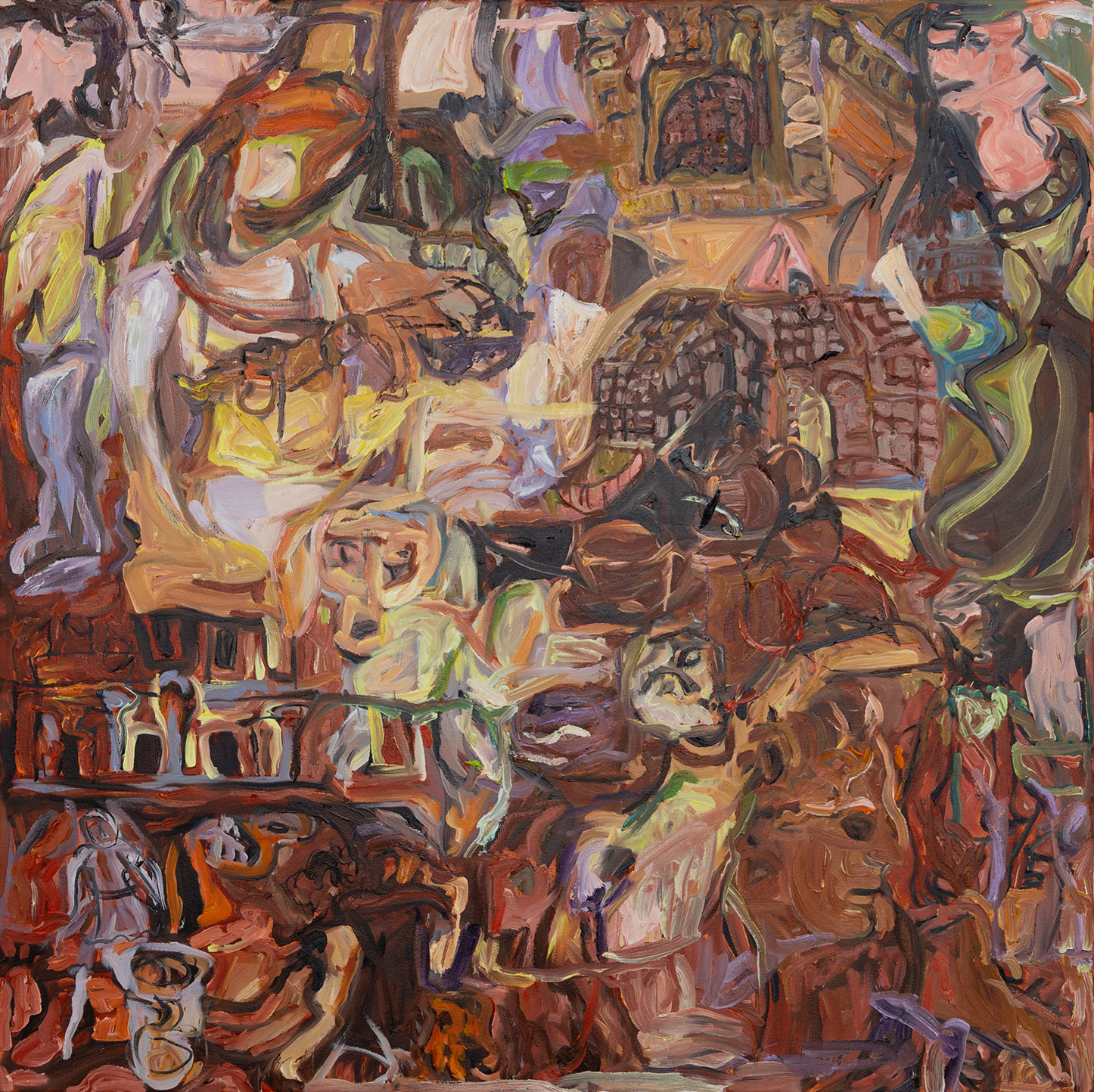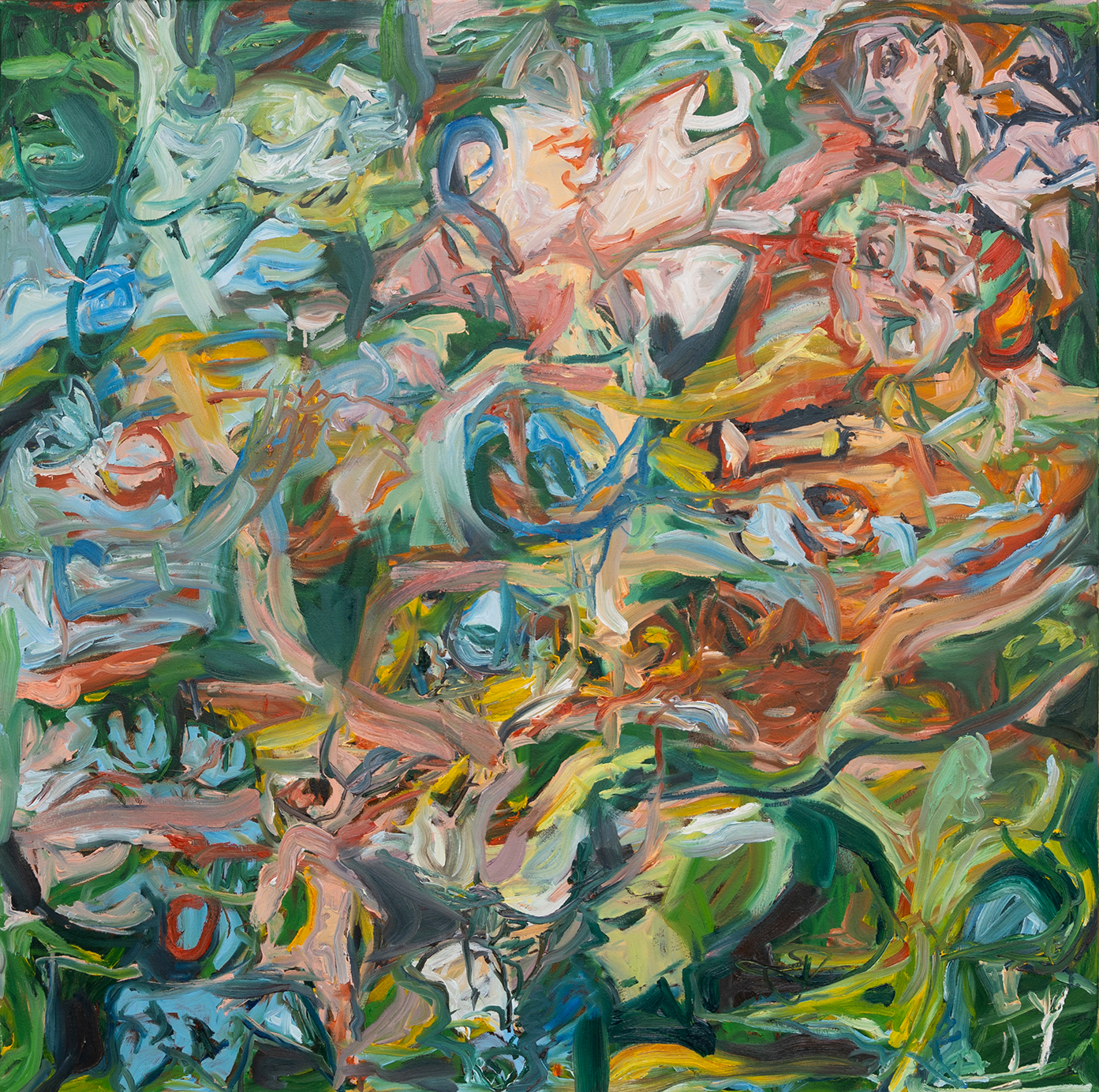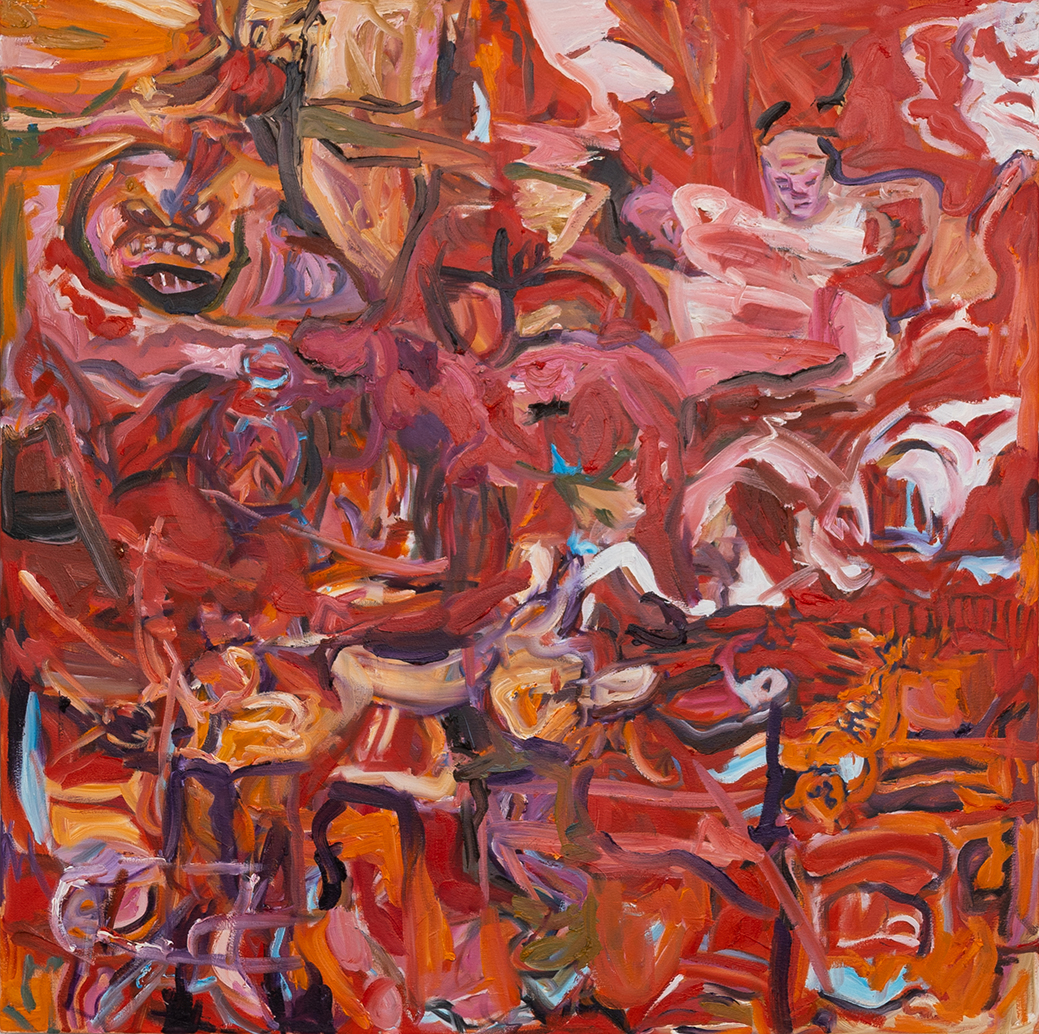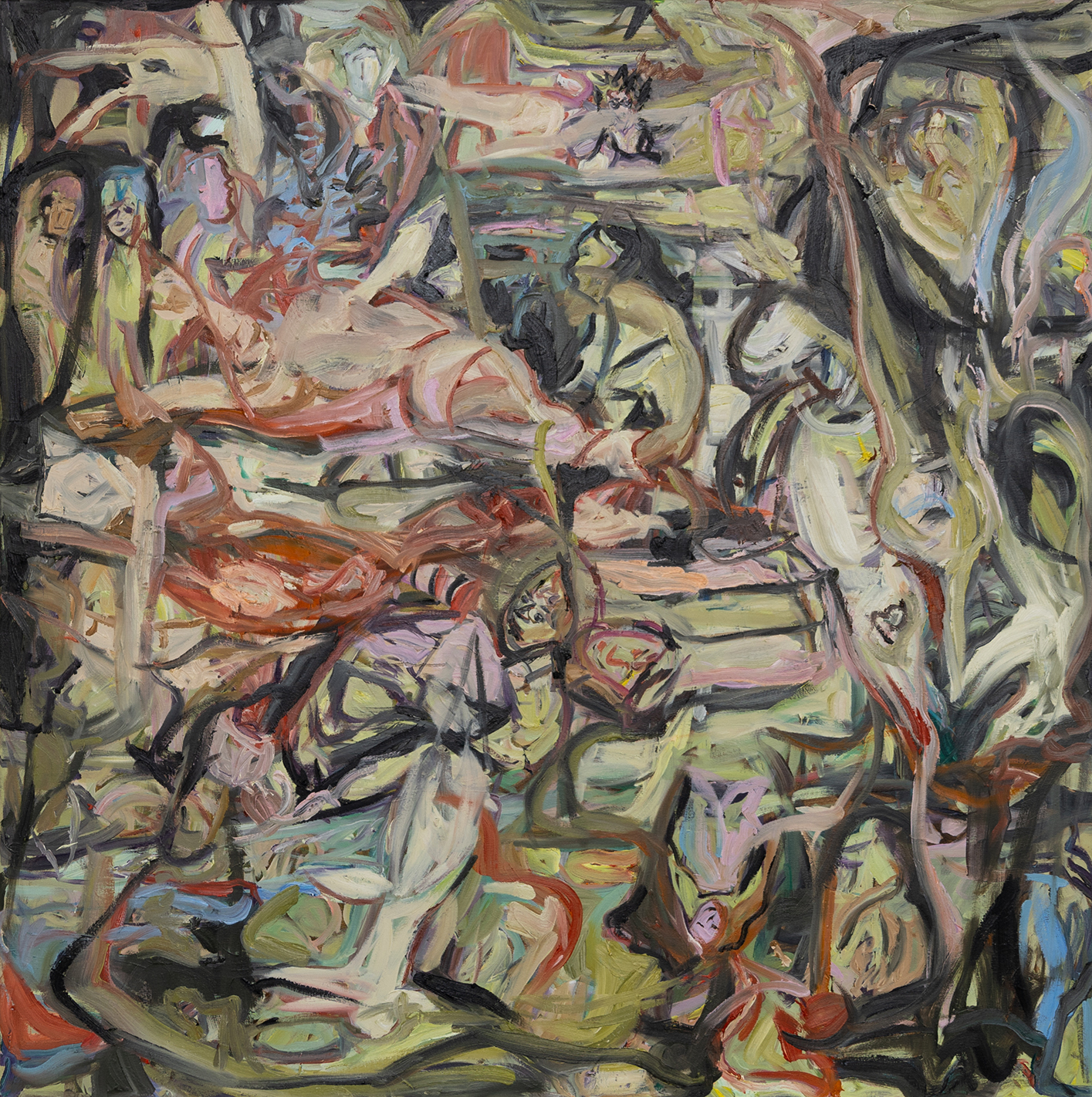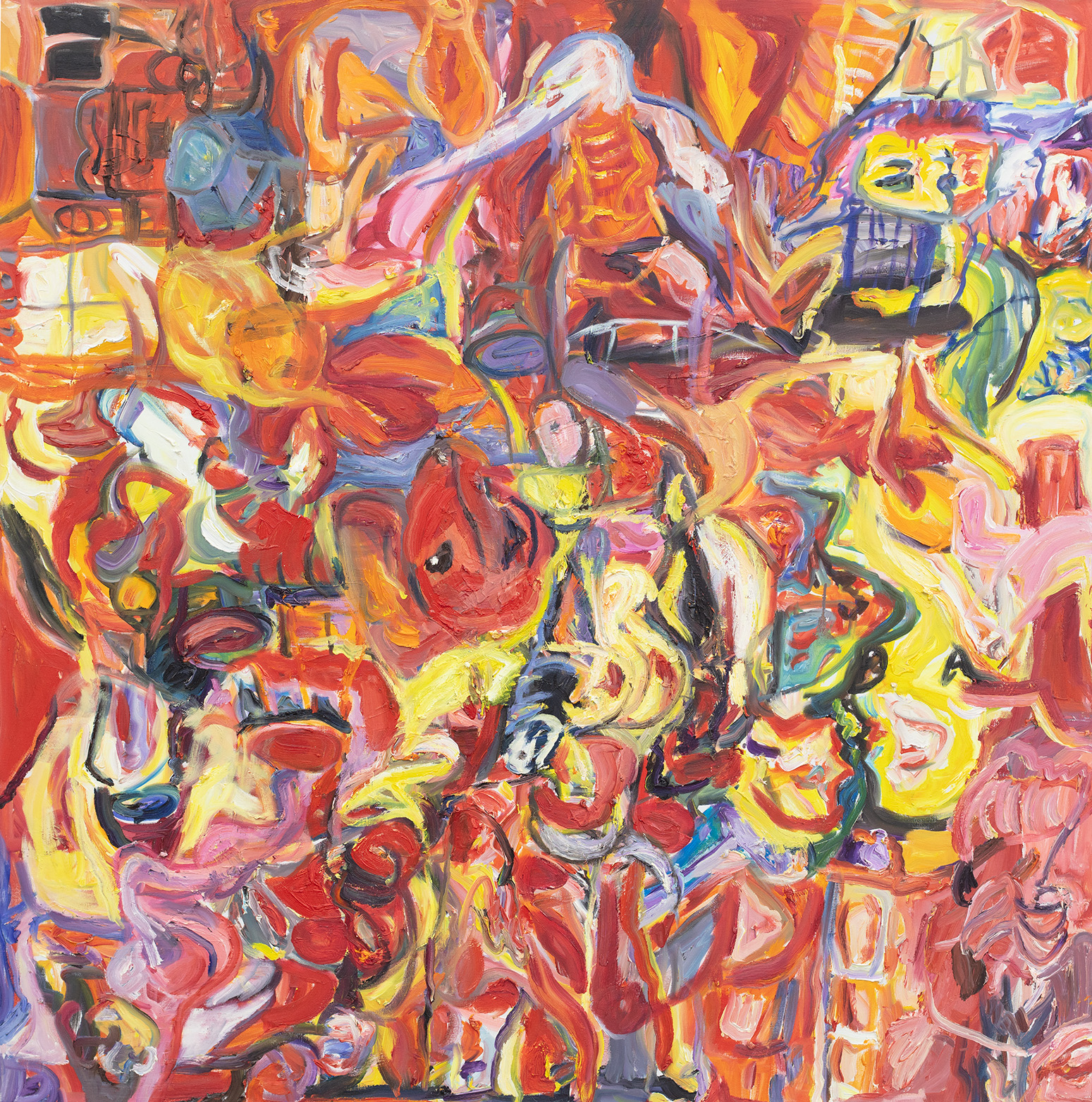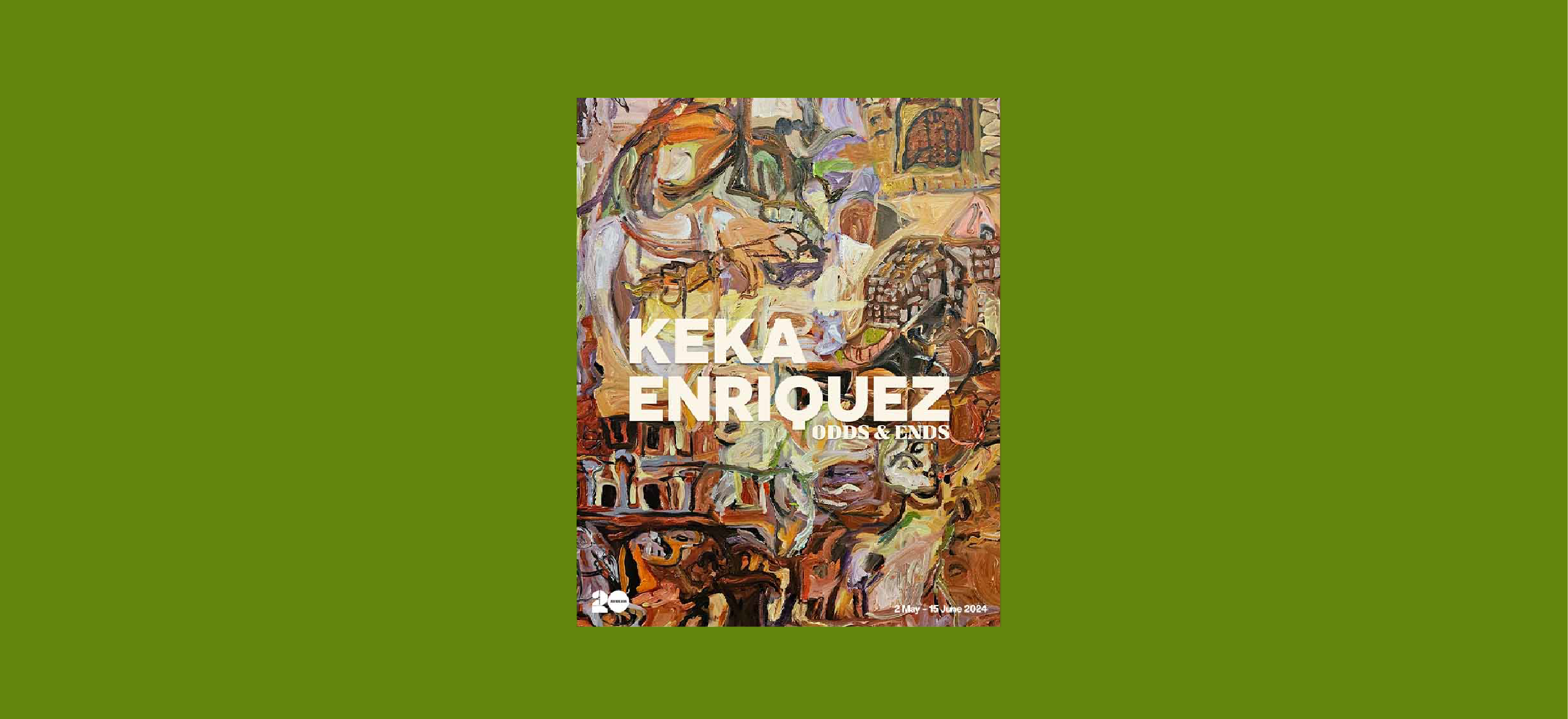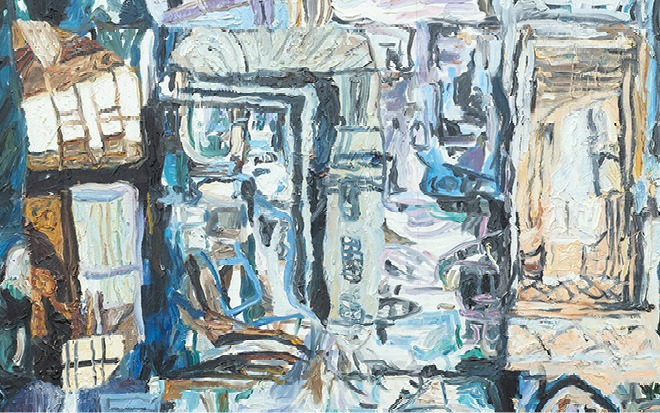
About
Infelicitous as it may sound, Keka Enriquez wallows in paint. It is as if the painting, which is the consequence of a highly intuitive but also deliberate labor, plays out in unmediated incipience. In this scenario, the structure of the medium tends to wear thin and eventually dissipates, and in lieu of the illustrious armature of the art, we are struck by fulsome layers of paint as if there was no support, no ground, and no brush. This is the sense of wonder that nests in the mess of the artist’s commitment to, but also maybe suspicion of, paint and why it must be captured in painting. Enriquez luxuriates in painting, as it were.
In this abiding reflection on the tension between work and art work, Enriquez inevitably extends her exploration of how painting elaborates in the continuum of property. The density and opacity of the art are the sources of its attractiveness, in the same way that they are also the origins of certain relations that produce artists and their contexts, alongside privileges and scarcities. It is in this light that the material of painting is rendered more tendentious and less convenient, becoming more extensive as it becomes more intimate. In this regard, the interior is central, whether it is a trace of a personal mood or state, a reference to the domestic world and the roles of individuals within it, or just a stimulus to stir up the desire for things so thick in their substance that they need to be partaken of with delight, touched and tasted in the consciousness.
As Enriquez herself confides: “I have always been interested in form, brushstrokes, color, and experimentation to the point that subject matter becomes only incidental. In terms of subject matter, the home and every physical, psychological, sociological aspects of it. Now the people who have been part of my home are included; whereas in the past, I would depict the home without people. They were always empty. I think that people will be interested in the process of my painting and how I mostly used intuition in composition, choice of color, form, and symbols like animals and other objects hidden and exposed in the paintings.”
In the interaction between the anxiety in the face of voids and the talent to work up the space, so to speak, Enriquez is drawn to, on the one hand, the mass-mediation of the interior in commercial design, and the idiosyncrasies of living in the daily grind from chore to chore, on the other. In a room, for instance, there might be a stray figurine on a shelf or a watermelon on the kitchen table. These are signs of everyday errands, but also archives of memory over the years.
In her previous projects, Enriquez would pursue the promise of her reflections on the psychological and spatial interior by investing in the constitution itself of objects and the agents within their ambit. In one initiation, for instance, she would break down the stature of an interior through miniature plaster casts of parts of the house, which are laid out in a heap or mound and on which she would paint a picture of an interior on unstable and reorganized ground, practically in a what looks like a rubble of repeating odds and ends.
And so, the temptation attending the domestic mystification, in the course of her practice, comes in contact with the redistribution of the elements of painting: the devotion to plasticity creates irresistible contingency in which whatever figuration there is to glean gets absorbed into an overall abstraction. Enriquez does this through a heady and intrepid application of paint, with joy and glee and scrutiny, to catch the intricate, if not fleeting, details of life’s accoutrements and necessities. She also does it as if the brush and her hand had entwined to produce at once stroke and smudge. The attachments to these bodily indicia then morph into, or return to, the primordiality of painting as a moment of viscosity before it is sensed as texture or image or meaning or ideology: its destiny is not a fully formed picture but rather the lavish layers of itself. Between the accretion of properties and the recollection of consumption in the imagination of the woman and the artist lies a thoughtful meditation on belonging in which anatomy and furniture flesh out the condition of a teeming mingling.
Keka Enriquez (b. 1962, Manila, Philippines; lives and works in San Francisco, California) is a distinguished contemporary artist celebrated for her experimental and expressionistic paintings. Influenced by the Neo-expressionist movement, Enriquez's work is characterized by textured brushstrokes, bold colors, and innovative form. Renowned for her exploration of domestic interiors, traditionally the domain of women, Enriquez subverts the masculine art movement to delve into the psychological and social dimensions of home. Through her manipulation of pigment, texture, and surface, she retrieves and reshapes the multi-layered experience of the homescape while contemplating the significance of painting as a whole. After twenty-five years of working within her San Francisco community, Enriquez returned to the art world in 2023. A showcase in 2024 will unveil a series of new oil on canvas paintings highlighting the evolution of her practice.
Enriquez embarked on her artistic journey in the 1980s under the mentorship of Roberto Chabet, widely acclaimed as the father of conceptual art in the Philippines. The artist graduated with a Bachelor of Fine Arts in Painting from the University of the Philippines. She has exhibited her work in the Philippines, the
United States, England, Australia, Taiwan, Hong Kong, and Malaysia. In 1994, she was a recipient of the Cultural Center of the Philippines’ Thirteen Artists Award. Under a grant from UNESCO, she obtained her Masters degree in Fine Arts at the Norwich School of Art and Design, England in 1995.
Video
Works
